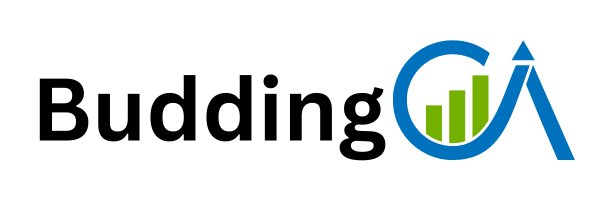For a Chartered Accountancy (CA) student, industrial training offers a unique opportunity to gain hands-on experience in the corporate world. It’s an essential step that can significantly shape your career. While the theoretical knowledge gained during articleship is crucial, practical exposure during industrial training provides a much-needed edge when it comes to industry-ready skills. This comprehensive guide will walk you through the steps to secure industrial training and succeed in it.
Why Industrial Training Matters
Industrial training plays a crucial role in bridging the gap between theory and practice. It offers a number of benefits to CA students, such as:
- Real-world exposure to finance, tax, audit, risk, and analytics.
- Corporate culture immersion, helping you understand business processes, soft skills, and work ethics.
- A stronger résumé that stands out to future employers, helping you land higher-paying positions.
- The potential for Pre-Placement Offers (PPOs), which can be a direct entry into prestigious firms post-qualification.
- Networking opportunities with professionals who can act as mentors or provide job referrals after you qualify.
By undergoing industrial training, you gain practical knowledge that not only complements your academic studies but also significantly enhances your career prospects.
Eligibility Criteria for Industrial Training
Before you start applying for industrial training, it’s important to know the eligibility criteria set by the Institute of Chartered Accountants of India (ICAI).
- Articleship Duration: You must complete at least two years of your articleship before applying for industrial training. The industrial training typically starts during the last 12–18 months of your articleship.
- Training Duration: The duration of industrial training is 9 months to 12 months.
- Principal’s Approval: You need approval from your principal (your CA firm supervisor) at least three months prior to starting industrial training.
- Application Process: Industrial training applications must be submitted via ICAI’s Self-Service Portal (SSP) using Form 104.
Ensure that you are eligible for industrial training and that you have discussed the possibility with your principal, as their consent is essential to begin this training.
Step-by-Step Guide to Getting Industrial Training
Now that you know the basics, let’s explore a step-by-step process on how to secure industrial training.
Step 1: Clarify Your Career Goals
Before you start looking for companies offering industrial training, take some time to reflect on your career goals. Ask yourself questions such as:
- Which area of finance do you want to explore (audit, taxation, risk management, corporate finance)?
- What type of company or industry interests you (financial services, manufacturing, e-commerce, fintech)?
- Would you prefer a big corporation or a start-up?
Identifying your interests will help you target the right companies and roles during your industrial training.
Step 2: Strengthen Your Skill Set
As you prepare to apply for industrial training, make sure that your skills are sharp. Industrial training requires more than just theoretical knowledge. You need to have a good understanding of various accounting, taxation, and financial concepts. Some skills that will help you stand out include:
- Technical Knowledge: Knowledge of accounting standards (Ind AS, IFRS), GST compliance, financial statement analysis, and corporate taxation is essential.
- Excel Skills: Excel is used extensively in finance for tasks such as budgeting, forecasting, and financial analysis. Mastering Excel functions like VLOOKUP, Pivot Tables, and complex formulas is crucial.
- ERP Systems: Familiarise yourself with popular ERP systems like SAP, Tally, and Oracle. Experience in these systems is highly valued.
- Financial Modelling and Valuation: Learning financial modelling can be a game-changer, especially if you’re looking to get into investment banking or corporate finance.
You can take online courses or attend workshops to enhance these skills. The more proficient you are, the better your chances of landing a good industrial training position.
Step 3: Craft a Professional Résumé
Your résumé is your first impression on potential employers, so it’s important to make it stand out. Follow these steps to create an effective résumé:
- Professional Summary: A brief introduction that highlights your skills, areas of expertise, and the type of industrial training you are looking for.
- Key Skills: Highlight your technical skills such as knowledge of GST, Ind AS, Excel, and accounting tools.
- Experience: Include your articleship experience and any key projects or tasks you handled, such as audit, tax filing, financial reporting, etc.
- Achievements: Quantify your achievements (e.g., “Assisted in reducing tax errors by 15% through effective reconciliation”).
- Certifications: Include any relevant certifications or online courses related to finance or accounting.
Make sure your résumé is concise (one page) and free of grammatical errors. A clean and professional layout can make a significant difference.
Step 4: Start Your Job Search
Once your résumé is ready, it’s time to start searching for companies offering industrial training positions. There are several ways to find industrial training opportunities:
- ICAI Job Portal: The ICAI job portal (cajobs.icai.org) posts vacancies for industrial trainees across various sectors.
- Regional ICAI Websites: Websites like EIRC (Eastern India), SIRC (Southern India), and WIRC (Western India) often list industrial training opportunities.
- Company Career Pages: Many large companies such as Flipkart, Amazon, and Razorpay offer industrial training opportunities. Visit their career pages regularly for updates.
- LinkedIn: Create a LinkedIn profile, join CA-related groups, and set job alerts for industrial training.
- Alumni and Seniors: Tap into your network. Ask seniors or alumni who have already completed industrial training for leads or referrals.
Step 5: Apply for the Position
Once you have shortlisted companies, it’s time to apply. Follow these steps:
- Tailor Your Application: Write a personalised cover letter for each application. Explain why you want to join that particular company and how it aligns with your career goals.
- Fill Form 104: Ensure that you fill Form 104 on ICAI’s Self-Service Portal. This form registers you for industrial training with ICAI. It includes details such as the company name, duration, and training details.
- Attach Your Résumé: Always attach your updated résumé along with your application. Include any other documents that the company may ask for, such as transcripts or certificates.
- Follow Up: After submitting your application, follow up with the company after one week to express your continued interest in the position.
Step 6: Prepare for the Interview
Once you have applied, you may be called for an interview. The interview process is critical, as it is your chance to showcase your skills and knowledge. Prepare for the following types of questions:
- Technical Questions: Expect questions on accounting standards, GST compliance, tax laws, financial reporting, and auditing processes. You may be asked to explain concepts such as Ind AS 116, GST filing procedures, or financial statement analysis.
- Behavioural Questions: Be ready to talk about your experiences during articleship or internships. Use the STAR (Situation, Task, Action, Result) method to answer behavioural questions.
- Company-Specific Knowledge: Research the company you’re interviewing with. Understand its business model, recent financial reports, and key industry trends.
Step 7: Onboarding Process
Once you’ve cleared the interview, the next step is onboarding. This includes signing the offer letter and completing all necessary documentation.
- Notify Your Principal: Inform your principal about your industrial training offer at least three months before the training starts.
- Training Agreement: Sign an agreement with the company specifying the terms of the industrial training, including the duration, stipend, and responsibilities.
- Documentation: Submit any required documents such as Form 104, your offer letter, and your principal’s NOC (No Objection Certificate).
Step 8: Get Started with Your Training
Once you’ve completed all formalities, it’s time to begin your industrial training.
- Induction: Most companies have an induction program to help you get familiar with the company’s policies, culture, and expectations.
- Learn and Contribute: As an industrial trainee, you’ll be exposed to a wide range of tasks such as financial reporting, audit preparation, tax filings, and budgeting. Be proactive in learning and contribute wherever possible.
- Mentorship: Ensure that you have regular feedback sessions with your mentor or supervisor. This will help you understand areas where you can improve and excel.
Roles and Responsibilities of an Industrial Trainee
As an industrial trainee, your responsibilities may vary depending on the company, but here are some common tasks you can expect to handle:
- Financial Reporting: You will assist in preparing balance sheets, income statements, and cash flow reports.
- Tax Compliance: You’ll work on tax filings, GST returns, and TDS returns.
- Audit: You may assist with internal and external audits, documenting findings, and ensuring compliance with regulations.
- Budgeting & Forecasting: You’ll help prepare financial projections and annual budgets for the company.
- Risk Management: You may assist in identifying financial risks and implementing strategies to mitigate them.
Balancing CA Final Studies with Industrial Training
Industrial training is demanding, but with effective time management, you can balance it with your CA Final studies. Here are some tips:
- Create a Study Schedule: Allocate specific time slots during the day for both work and study.
- Use Weekends Effectively: Use weekends to catch up on heavy study material and practice mock exams.
- Study Leave: Make sure to request study leave from the company well in advance to give yourself a head start before exams.
Resume Building and Post-Training Career
Your industrial training experience will be a key highlight on your résumé. Here’s how you can leverage it:
- Add Key Achievements: Quantify your contributions, such as improving efficiency in tax filing or reducing errors in audits.
- Skills: List all technical skills acquired, such as financial modelling, ERP systems, and budgeting.
- Networking: Industrial training helps you build a strong professional network, which could result in job referrals or job offers.
Conclusion
Industrial training is a transformative step in the journey of a CA student. It provides the perfect platform to gain real-world exposure, build a strong professional network, and enhance your career prospects. By following the steps outlined in this guide, you can ensure that you not only secure a position but also excel during your training.
With the right attitude, preparation, and commitment, industrial training will play a pivotal role in shaping your career and setting you on the path to becoming a successful Chartered Accountant.
Calling all CA dreamers!
🔴 Are you tired of searching for the perfect articelship or job?
Well, fear no more! With 10K+ students and professionals already on board, you don't want to be left behind. Be a part of the biggest community around! Join the most reliable and fastest-growing community out there! ❤️
And guess what? It’s FREE 🤑
✅ Join our WhatsApp Group (Click Here) and Telegram Channel (Click Here) today for instant updates.




